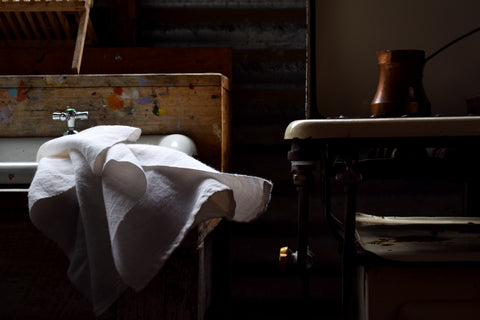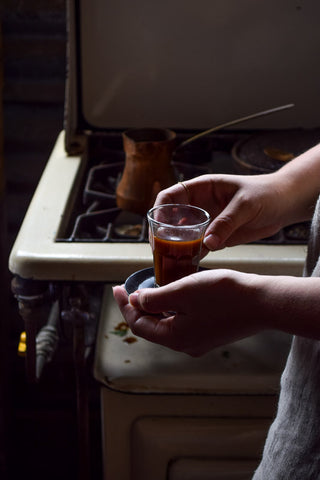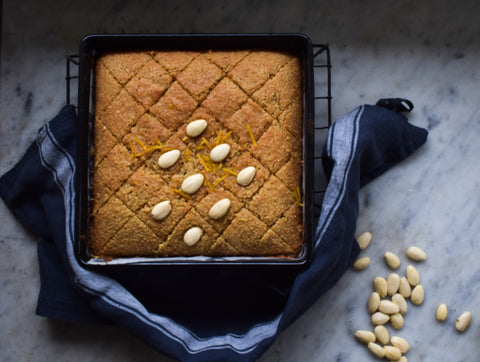Discovering Turkish coffee



How is it that you can go through life not knowing something exists and then, wham, it pops up in your life consecutively and becomes a permanent presence in your day. Such is my experience with discovering Turkish coffee.
Stylist Stephanie Stematis (aka Stephanie Somebody) introduced me to Turkish coffee while demonstrating making Turkish coffee at Sophie Hansen's Local is Lovely Photography Workshop in November last year. As part of a photography exercise Stephanie lit the cast iron enamelled gas cooker and brewed Turkish coffee in a copper cezve (Turkish coffee pot). She described how as a child she would make Turkish coffee for her grandfather, patiently waiting for the ring of bubbles to form crema around the surface of the brew before removing it from the heat and allowing the grounds to settle and pouring the coffee into espresso glasses.
When I returned home from the photography workshop, coincidently, Duncan had a delivery of Romanian enamelware at our shop, including dozens of enamel Turkish coffee pots in four sizes and, at that stage, two colours (now we have red, white and blue). Customers use them not only for Turkish coffee, but as ladles and for serving gravy and sauces. One kilogram bags of fine Turkish grind coffee followed from our coffee supplier. I had to learn how to make Turkish coffee fast.
I turned to our friend Toni Swain, who regularly makes Turkish coffee in preference to Italian espresso. She filled the cezve, or briki as it is known in Greek, with water, added two teaspoons of Turkish coffee (Greek coffee is a similar grind), and two teaspoons of raw sugar, and put it on the heat to brew. The key is not to walk away and find distraction. That's the moment when the coffee will boil over and burn. In a meditative ritual it forces you to stop, slow down and watch for the tell-tale ring of bubbles around the rim of the briki that signals it's time to remove the pot from the heat. Then simply wait a minute or so, giving the grounds time to settle on the bottom of the pot and pour. You can even search Youtube for tutorials on Making Turkish Coffee.
Duncan has been making Turkish coffee at home and at the shop. It's a matter of experimentation with the amount of coffee and sugar to appeal to your taste. Inspired by our Turkish coffee discovery I made a Turkish dessert, Revani, based on Gourmet Traveller's Turkish Recipe archive. Revani translates to a sweet made with semolina. I altered the recipe based on what was on hand, substituting almond meal for crushed almonds. I used a square Falcon enamel cake tin, for easy transport, and poured the syrup over the cake allowing it to soak in making it extremely moist. We shared it with our neighbouring Jenkins Street shopkeepers, and the rest was devoured by our sons and their friends. This recipe is a keeper.







Megan Trousdale
Author